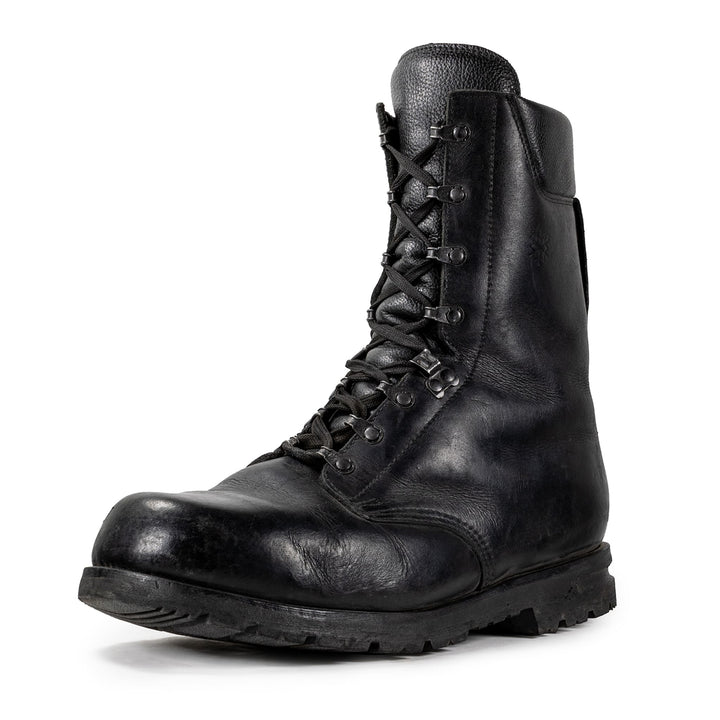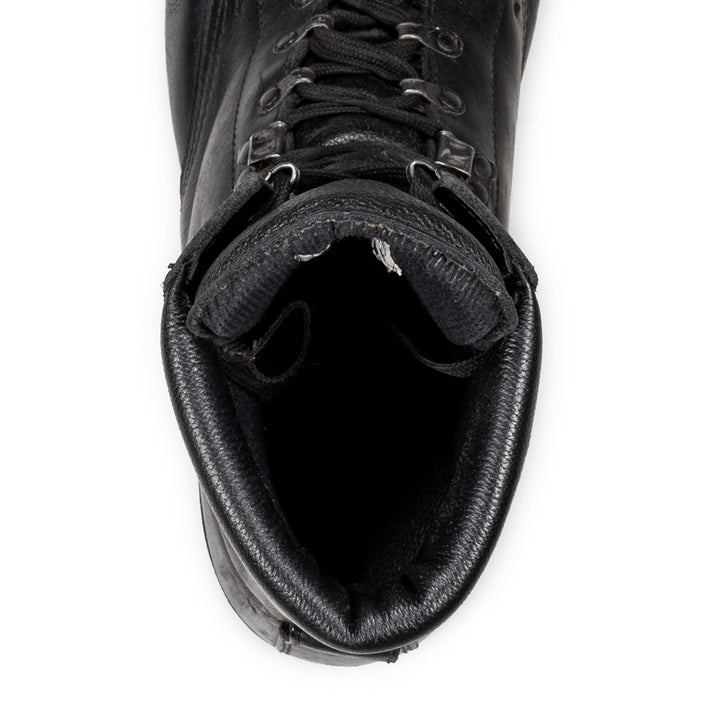Czech M2000 Cold Weather Combat Boots
- Low stock - 4 left
- Backordered, shipping soon
During the cold war, many soviet countries looked to Czech-made footwear for comfort and high quality. "Made in Czechoslovakia" was something you'd want to see on your feet as much as we'd want to see "Made in Austria" or "Made in Finland" today. Prabos, the manufacturer of the M2000 Combat Boot, has been making footwear for Czech military forces for decades. Colloquially known as "Kanady" or "Canada" boots for their suitability to harsh, cold conditions, these Model 2000 boots were their top-spec cold weather boots until very recently (we've seen plenty in this batch with manufacturing dates as recent as 2016!)
Featuring cozy multi-layer insulation, an aggressive tread pattern, and hydrophobic cowhide, you'll find they're both rugged and extremely comfortable. The newer models even feature 3M's thinsulate material for insulation, a well known staple fantastic cold climate gear. The cushioned tongue has holes for ventilation, the signature Czech armed forces insignia, and the top of the boot has a thick padded collar to avoid chafing or bruising your lower calf. It takes a lot of design notes from Danish, Finnish, and even Swiss boots which we've sold in the past. If you're a fan of any of those, these will feel right at home on your feet, if not a little cozier than their bulky contemporaries.
Specs
- Hook Grommets
- Thick leather construction, Hydrophobic impregnated cowhide
- Fully Insulated lining (Newer models contain 3M Thinsulate)
- Vented Tongue
- Cushioned collar to avoid lower calf abrasion
- Vulcanized rubber outsole ("new" condition variants have been resoled, other variants have the original sole)
- 3 rows D-ring and 5 rows of hook style speed-lacing grommets
Sizing
Boots are sized in the Mondopoint sizing system, which we've converted to US Men's footwear sizing for convenience. We'd recommend using your regular boot sizing for the M2000's.
Condition
Factory Upgraded:
M2000 boots that have been Factory Upgraded feature a new outsole with a "Logger" styled tread, most notably featured on our Austrian Paratrooper Boots. The leather upper is in like-new condition, with only minimal wear, if any.
Excellent:
Every "Excellent" condition boot should have only as much wear as one-to-two weeks of normal use. Any scratches, scuffing, or dirt is superficial and will clean up nicely with regular use.
Good Condition:
These have seen a little more wear than our "Excellent" and "Factory Upgraded" condition boots. Our M2000 boots qualify as being in "Good" condition when the leather upper of the boot has received non-superficial damage.
Non-superficial damage is wear that you wouldn't receive from regular use. Scratches, divots, and scuffing in the leather that can't be repaired to 100% without help from a competent cobbler.
The outsoles of a "Good" condition boot has been used, most notably in the heel of the boot. Regardless the "Good" condition boots still have plenty of life in them despite said wear.
Breaking In Your Boots
Some of these boots have seen some use, meaning the leather may not be as stiff as new boots, but a breaking-in period is still recommended.
To break in your boots, wear them as often as possible over a one-to-two week period of regular activity (think grocery store trips, not hiking trips or guerilla warfare "outings"). Use good, full-length wool socks and take note if you feel any "hot spots" while walking around. Friction between your foot and the boot causes blisters. Breaking in your boots should help with this.
If hot spots persist, silk or synthetic "liner socks" (worn under your wool ones) are a cheap and easy way to protect your fieet. they are feely available at most outdoor stores.
Exchanges & Warranty
If your size doesn't fit you correctly, please contact us within 30 days. The entire cost of your first exchange will be covered by KommandoStore, including postage to and from your CONUS address.
Recommended Aesthetic and Functional Practices
Speed Lacing
It is Ivan's opinion that tying your boots with a speed lacing method is superior to any external bow or knot.
It not only looks cleaner, but also minimizes the chance that you will trip, get your boots stuck, or have them untie because you used a granny knot like a child.
There is an assortment of different speed lacing methods that will have these three attributes in common.
- Very long laces (The excess in lace is necessary. If your boots come with normal-size laces, consider investing in longer laces)
- At least one full wrap of lace around the ankle
- Tucking all excess lace deep inside the boot
Here are video guides for two different styles of speed lacing. [Style 1] [Style 2]
Most of the boots come with laces that are a little too short for most conventional speed lacing (it is still very possible if you copy the way it is laced in the photos, but it is not as sturdy or easy as it could be). Luckily good laces are inexpensive. Warehouse Ivan recommends you pick up some 87" or 92" laces (regardless of shoe size, it doesn't affect the lace length like you think it would)
Blousing and Tucking Your Trousers
If you are not going to tuck in your trousers when you tie your boots and you are wearing baggy pants, we recommend investing in elastic blousing garters / "boot bands."
It will look cleaner and keep your trouser cuffs out of the way.

































